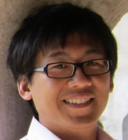Very excited for Edward and Manuel, joint postdocs with the Tank Lab and part of our BRAIN CoGS big collaboration, who have this paper now out in Nature.
- Edward H. Nieh, Manuel Schottdorf, Nicolas W. Freeman, Ryan J. Low, Sam Lewallen, Sue Ann Koay, Lucas Pinto, Jeffrey L. Gauthier, Carlos D. Brody & David W. Tank, Geometry of abstract learned knowledge in the hippocampus, Nature 2021.
Abstract: Hippocampal neurons encode physical variables1,2,3,4,5,6,7 such as space1 or auditory frequency6 in cognitive maps8. In addition, functional magnetic resonance imaging studies in humans have shown that the hippocampus can also encode more abstract, learned variables9,10,11. However, their integration into existing neural representations of physical variables12,13 is unknown. Here, using two-photon calcium imaging, we show that individual neurons in the dorsal hippocampus jointly encode accumulated evidence with spatial position in mice performing a decision-making task in virtual reality14,15,16. Nonlinear dimensionality reduction13 showed that population activity was well-described by approximately four to six latent variables, which suggests that neural activity is constrained to a low-dimensional manifold. Within this low-dimensional space, both physical and abstract variables were jointly mapped in an orderly manner, creating a geometric representation that we show is similar across mice. The existence of conjoined cognitive maps suggests that the hippocampus performs a general computation—the creation of task-specific low-dimensional manifolds that contain a geometric representation of learned knowledge.












